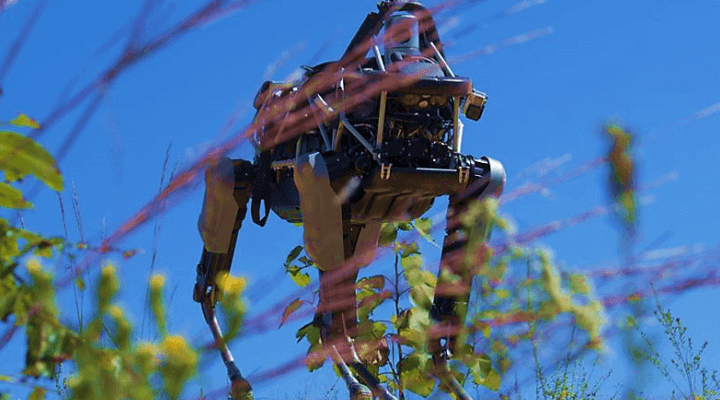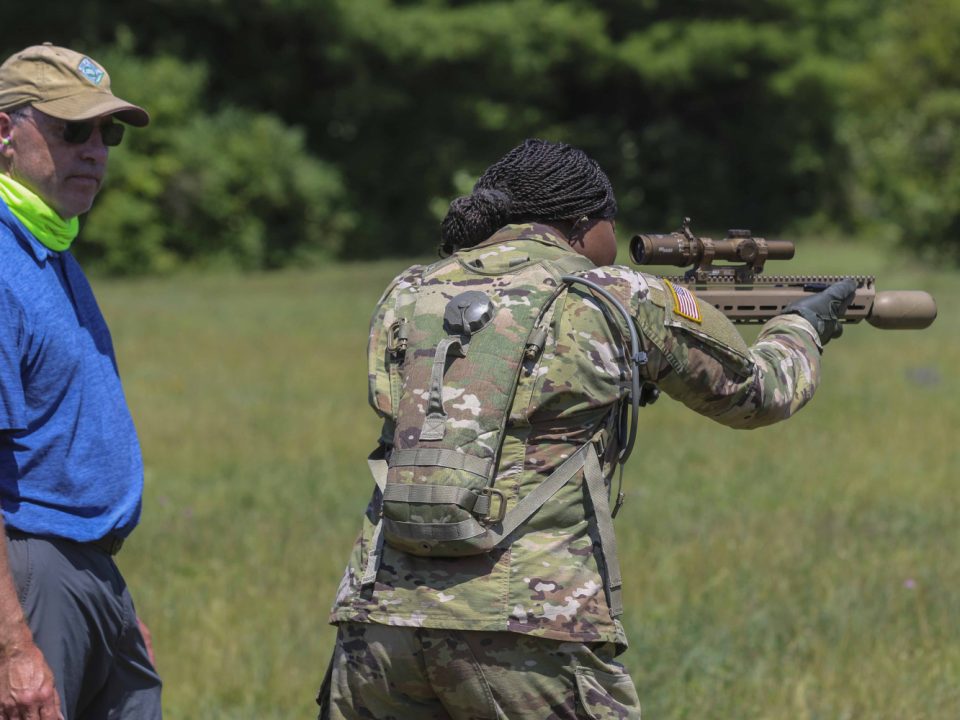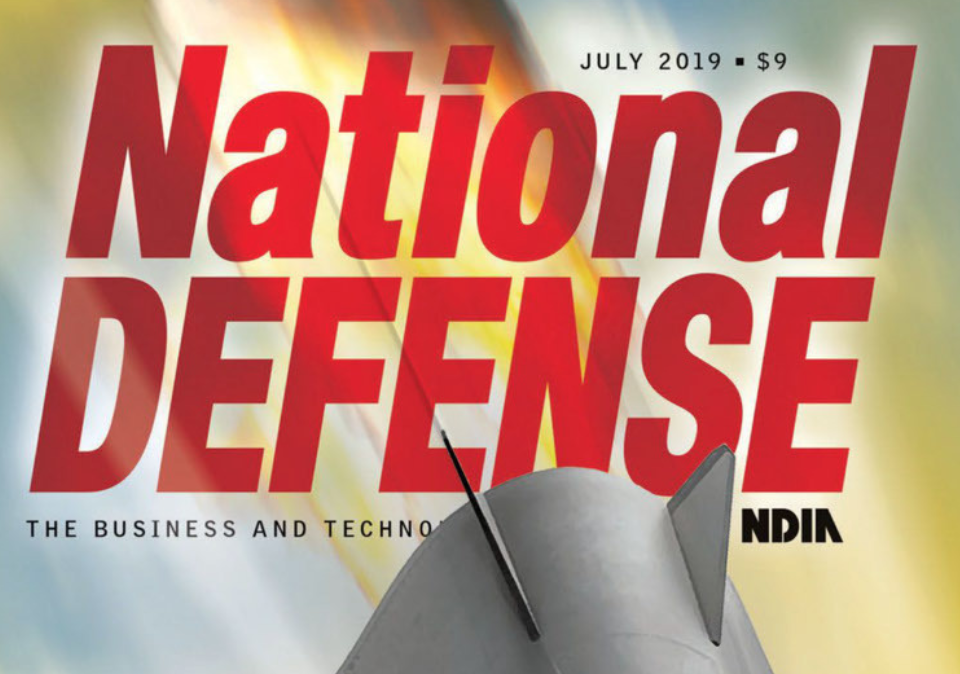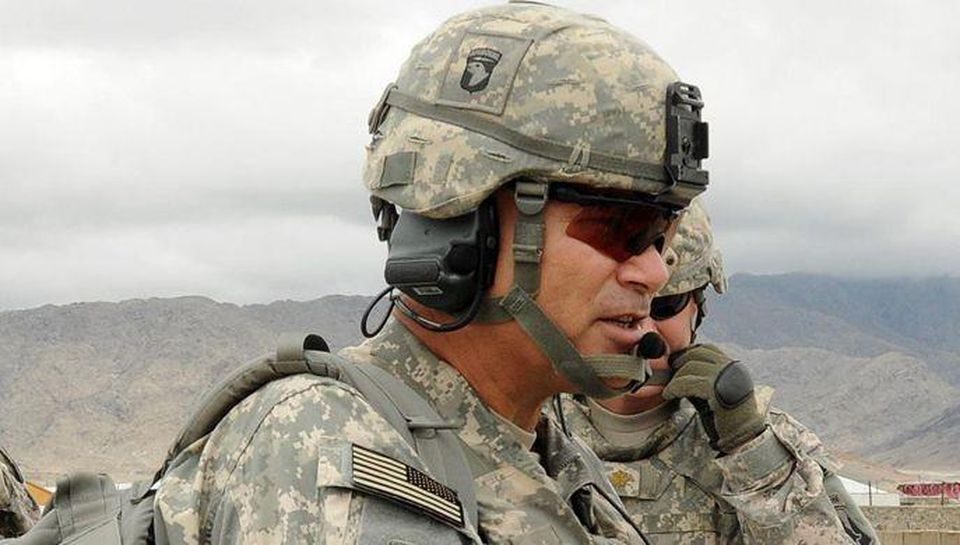
T-Worx, Army develop weaponry to equip soldiers with artificial intelligence, real-time integrated data:
September 11, 2019
Part 1 of NGSW Series: Video by Task & Purpose Chris Cappy regarding NGSW program, focus on Textron animation
December 10, 2019
Artificial Intelligence (AI) or machine learning is being used by military intelligence and at the high strategic level. The question is whether this technology will ever filter down to the soldier actually doing the fighting on the ground? Science fiction novels and movies suggest a system that can communicate with a warfighter in real time and provide situational awareness, but how far is the fiction from reality?
“The most important weapon is situation awareness, and there are AI-based tools to help a lot with this,” explained Jim Purtilo, associate professor of computer science at the University of Maryland.
“Visualization, communication, simple planning, these all go together at squad level,” Purtilo told ClearanceJobs. “Being able to leverage augmented reality to ‘see’ where the bad guys are, this is very cool. Being able to aim your squad weapon at a target and in effect use it as a pointer to call in indirect fire, even cooler.”
A lot of what Purtilo describes sounds like science fiction from the movies, but there are already developments underway to bring this to a battlefield in this galaxy – and sooner than you might think.
Sterling, Virginia-based T-Worx Holdings, LLC is already working to develop weaponry to equip soldiers with AI, real-time integrated data. The technology innovation firm has had a 10-year relationship with the U.S. Army and has been selected to develop a platform that would bring AI systems to the Army’s NGSW Rifle and Automatic Rifle.
“The Army is facing a culture shift for quickly equipping our service members with modernized weaponry,” said Don McLaughlin, President, T-Worx Holdings, LLC, via a statement.
“The I-Rail helps the Army achieve a networked battlefield,” added McLaughlin. “T-Worx is engineering the most innovative products to meet the demands of an evolving battlespace. We are thrilled with the creation and progress of Army Futures Command‚ working together with industry and the military to modernize our force more efficiently – a key factor in maintaining overmatch against potential adversaries.”
Another firm, Encrypted Sensors, announced this week that it has developed another AI-based system that can “harden” a wearable computer – not from bullets, but from hackers. The danger of equipping soldiers with high-tech systems is that all the sensors and devices become useless if they go offline. Encrypted Sensors is providing the tools that can allow the systems to stay online, even if part of it is hacked or damaged.
The Field Programmable Gate Array (FPGA) are not operated like typical encryption programs, but instead work by embedding pre-programmed computer chips into the hardware, without the need to rely upon software for encryption.
AI is all about finding the gaps between what a human can accomplish, and what a machine can.
“AI techniques are popularly thought of in terms of how they apply to broad military problems, and for good reason,” noted Purtilo. “We use them to distill very nuanced predictions that otherwise hide under a mountain of data which no human could process easily; they tease out information about an opponent’s location, intentions, capabilities and activities, in some cases faster than the opponent can know it. This is a battle in decision space, and when we make better decisions, and faster, then we fight on our terms. We win.”
BATTLEFIELD OF TOMORROW
There are numerous considerations for how AI can be deployed to the infantryman of today. While situational awareness is crucial, adding technology may not be the short term answer.
“A grunt on patrol may not care much about this stuff,” warned Brad Curran, industry principal analyst at Frost & Sullivan.
“Even the surveillance tools may not have much value as they suck up a lot of battery and add a lot of weight,” Curran told ClearanceJobs. “You don’t want to take your eyes and ears off the task at hand when you are in hostile territory.”
Where AI could be a game changer is in its capacity to eliminate the soldier from harm’s way.
“AI is being applied and tested to replace human presence in hazardous zones by the use of unmanned ground vehicles, both, for combat as well as logistics,” said Saurabh Joshi, director at Jane’s by IHS Markit.
“These systems can process the environmental conditions and navigate accordingly by taking real-time decisions on an unmapped territory,” Joshi told ClearanceJobs.
AI could also be integrated into sensors that are used for communication.
“I can see AI that can help you find the best radio frequency or that can download the essential geospatial information for mind detection,” added Curran. “UAV video feeds that can be fed to a squad leader and sent on a heads up device over the help, and combined with visual augmentation can be useful – as long as it is not overwhelming.”
That is the biggest hurdle to overcome. Making sure that soldiers don’t get too much information when they need to be monitoring the ground in front of them. Just as it is dangerous to read texts while driving, receiving information on a heads up display while on patrol can also have deadly consequences.
“Fighter pilots can face sensory overload,” explained Curran. “If a device is heavy and intrusive they will turn it off, and then it is just more weight for a soldier to carry – but if you can get warnings from the sensor, and the AI can tackle handling radio frequencies where nodes can be rerouted or pick up a new satellite that can be helpful. AI should do the things that are a burden on the soldier.”
This is why despite attempts to integrate this technology into a soldier’s weapons and helmets have largely only been met with limited success.
“By themselves, tools for visualization, communication and more ended up stressing the operator with information overload,” added Purtilo. “There is only so much you want to have to look at, study, analyze, reboot, refresh, update and integrate while being shot at. AI brings a fundamental shift by helping to process all that information and offer only what the warfighters need just when they need it. Instead of posing a barrier, technology frees and enables our warfighters to do what they do best.”
FASTER DECISION MAKING
AI could also help commanders away from the battlefield obtain information faster than how soldiers can relay it through normal means.
“We will definitely see AI-based networked soldiers in future and a lot of work is being done in the present for this in the domain of command and control (C2) systems,” said Joshi.
“The goal of use of AI in C2 is to primarily to facilitate faster decision making by reducing the cognitive load on commanders, both at strategic and tactical levels while keeping the network secure,” he added.
Joshi suggested that AI could find its applications in all three phases of decision making.
“Analysis Phase: In this phase, AI is being used in fusing together the information received from various sensors and sources to generate a common operational picture for threat assessment or enemy intent analysis,” explained Joshi. “Planning Phase: In this phase, AI is potentially being used to test and simulate various options generated and we can see that classic OODA loop (Observe Orient Decide and Act) is broken into multiple decide and act loops or scenarios. Each action scenario is tested and the best solution is suggested as a course of action. Finally, in the execution phase, AI then generates actual mission tasking orders, weapons selection and pairing to reduce the cognitive load of the commander.”
Curran suggested that AI could further help with navigation, allowing soldiers to move away from large GPS devices to chips that can allow integration into helmets and other devices. “Very specific augmented reality could be very helpful,” he noted. “Blue force tracking is an example, so you can know where your friendly soldiers are, but possibly red force tracking so you know if the enemy might be around the corner.”
However, much of this technology isn’t around the corner. It may seem a bit like the technology in the novel Starship Troopers or the Star Wars films, and as such it could be awhile before we see soldiers in powered battle armor with onboard computers.
“All this technology can be helpful, but it can be decades away,” added Curran. “We’re only beginning to see the NSA or NGA [National Geospatial-Intelligence Agency] use this, and they’re still in the baby steps. It will be a while before it trickles down to the soldier in the field.”
Originally published on ClearanceJobs on September 2, 2019.
By Peter Suciu




